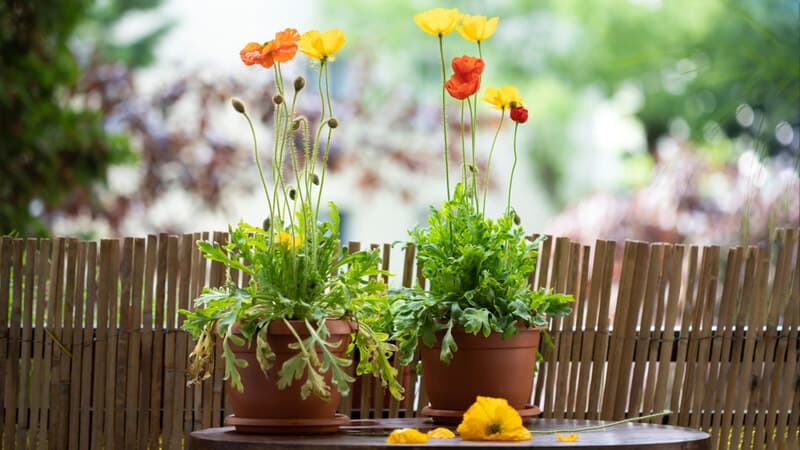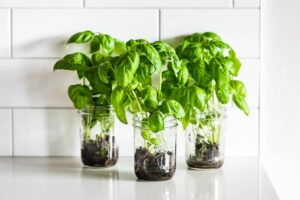
Poppies, with their vibrant blooms and delicate petals, are a beloved addition to any garden. While traditionally grown in open beds, it is indeed possible to cultivate these stunning flowers in containers. In this article, we explore the possibilities and techniques for successfully growing poppies in pots, bringing their beauty to even the smallest of spaces.
I. Introduction to Growing Poppies in Containers
Overview of Poppies Poppies are herbaceous flowering plants belonging to the Papaveraceae family, with species ranging from the iconic red Flanders poppy to the ornamental Oriental poppy. These annual and perennial plants are known for their showy flowers, which come in a variety of colors and forms, adding charm and elegance to gardens.
Advantages of Container Gardening for Poppies Container gardening offers several advantages for growing poppies, particularly for gardeners with limited space or challenging growing conditions. Potted poppies can thrive on balconies, patios, or windowsills, allowing individuals to enjoy their beauty even in urban or apartment settings.
Key Considerations for Successful Container Cultivation Successful container cultivation of poppies requires attention to key factors such as container selection, soil quality, and watering practices. By addressing these considerations, gardeners can create optimal growing conditions for healthy and vibrant poppy plants.
II. Selecting the Right Container and Soil
Choosing the Appropriate Container Size Select containers that are large enough to accommodate the root system of poppy plants, with a depth of at least 12 inches for adequate root development. Ensure the container has drainage holes to prevent waterlogging and root rot.
Selecting Well-Draining Soil Mix Use a well-draining potting mix formulated for container gardening, such as a blend of peat moss, perlite, and compost. Avoid heavy or compacted soils that can impede drainage and lead to waterlogged conditions, which are detrimental to poppy plants.
Ensuring Adequate Drainage Place a layer of gravel or broken pottery shards at the bottom of the container to enhance drainage and prevent soil from becoming waterlogged. This helps create a healthy root environment and reduces the risk of root rot and fungal diseases.
III. Planting and Caring for Poppies in Pots
Sowing Poppy Seeds Sow poppy seeds directly into the prepared container, scattering them evenly over the soil surface. Lightly press the seeds into the soil, but avoid burying them too deeply, as poppy seeds require light for germination. Keep the soil consistently moist until seedlings emerge.
Providing Optimal Growing Conditions Place the container in a sunny location where poppies can receive at least 6 to 8 hours of sunlight per day. Maintain moderate temperatures and provide protection from strong winds, which can damage delicate poppy stems and flowers.
Watering and Fertilizing Guidelines Water poppy plants regularly, keeping the soil evenly moist but not waterlogged. Avoid overhead watering, as this can cause fungal diseases. Apply a balanced liquid fertilizer every 2 to 3 weeks during the growing season to promote healthy growth and abundant flowering.
IV. Managing Pests and Diseases
Common Pests Affecting Poppies in Containers Poppies grown in containers may be susceptible to pests such as aphids, slugs, and snails. Monitor plants regularly for signs of pest infestation, such as distorted leaves, yellowing foliage, or sticky residue on stems.
Strategies for Pest Prevention and Management Implement cultural practices such as removing weeds and debris from around containers to reduce pest habitat. Use physical barriers such as copper tape or diatomaceous earth to deter slugs and snails, or apply insecticidal soap or neem oil for control of aphids and other soft-bodied pests.
Identifying and Treating Common Diseases Poppies in containers may be prone to fungal diseases such as powdery mildew and gray mold, especially in humid or poorly ventilated conditions. Ensure good air circulation around plants and avoid overhead watering to reduce the risk of fungal infections. Treat affected plants promptly with fungicides labeled for use on ornamental plants.
V. Harvesting and Enjoying Container-Grown Poppies
Timing for Poppy Flower Harvest Harvest poppy flowers when they are fully open but before petals begin to drop. Cut flowers early in the morning when they are at their freshest, using clean, sharp scissors or pruners to make clean cuts.
Drying and Preserving Poppy Pods To harvest poppy seeds, allow flowers to wilt and petals to fall off naturally. Harvest seed pods when they turn brown and begin to dry out, but before they split open. Hang seed pods upside down in a warm, dry location to allow seeds to fully mature and dry.
Creative Uses for Harvested Poppies Once dried, poppy pods and seeds can be used in various crafts and culinary applications, such as floral arrangements, wreaths, or seed-saving projects. Explore creative ways to incorporate harvested poppies into your home décor or garden projects, adding a touch of natural beauty and elegance to your surroundings.


